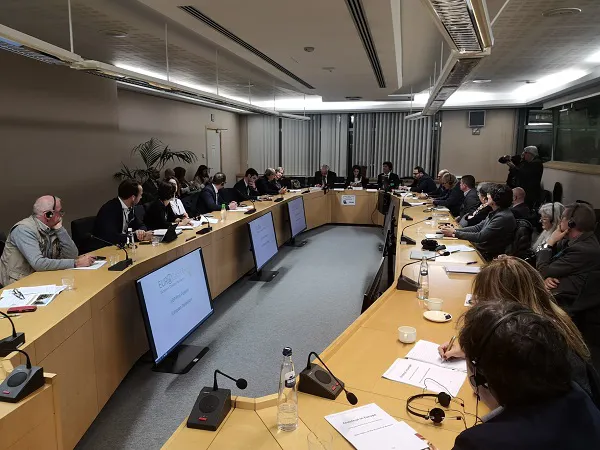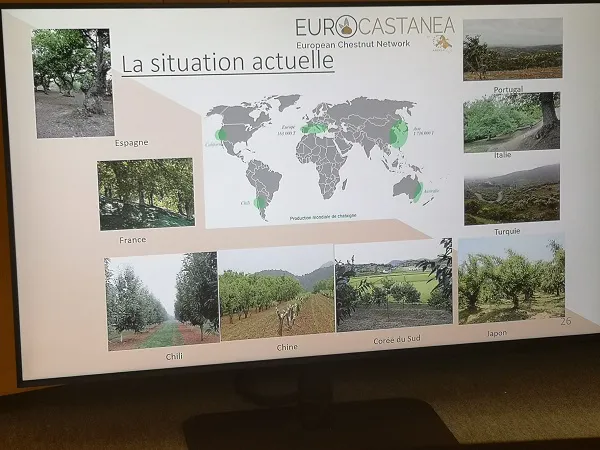Representatives from the EUROCASTANEA European Network met on 4th December 2019 at the European Parliament. Italy was represented by Prof. Gabriele Beccaro from Disafa at the University of Turin and scientific coordinator of Centro di Castanicoltura del Piemonte, Luciano Trentini from Centro Studi e Documentazione sul Castagno, Roberto Mazzei for Regione Campania and Renzo Panzacchi from Associazione dei Consorzi Castanicoltori dell'Emilia-Romagna. The event was the occasion to discuss the economic, social and environmental aspects of the chestnut chain on a European level.

Italy is still one of the leading producers, consumers and exporters of Castanea sativa in the world. Chestnut groves in Italy cover around 780,000 hectares, i.e. 7.53% of the total forest area - a considerable heritage, mostly created by man, and characterized mainly by mixed wood and abandoned wooded areas. Italy is also a leading producer of processed chestnuts such as marron glacés. Chestnut production is mainly focused in the central and southern areas.
The main producer regions are Campania (13,800 ha), Tuscany (10.400 ha),Calabria (8,600 ha), Piedmont (6,400 ha), Lazio (3,800 ha) and Emilia Romagna (2,800 ha). All other regions contribute with less than 10%.
C. sativa and Euro-Japanese hybrids cover almost 88% of the total Italian production, while 12% is of the Marrone variety, which are most appreciated on the market.

Campania is the leading exporter region (40% of the total volume) followed by Piedmont (16%). The last 5 years, however, have seen a drop in the volumes exported by Campania and an increase in those exported by Piedmont. Main suppliers are Spain (33%), Portugal (23%) and Turkey (14%) followed by Greece.
When asked about the future perspectives and main problems of the sector, Gabriele replied that "growing and management techniques need to be updated, especially by choosing cultivars and rootstocks suitable to the soil/weather conditions and resistant/tolerant to pathogens. In addition, more agronomic studies are needed to support production and expand commerce."
"As for the market, we need to improve marketing and be more competitive to push the consumption of Italian chestnuts. When it comes to the environmental value, we need to recognize the economic, social and landscape value of chestnuts. In order to reach these objectives, we need policies that support the sector as well as incentives to counter the abandonment of chestnut groves and favor aggregation. We also need to support non-professional growers who are very important but do not have access to EU support programs. Traditional chestnut groves must be considered different than forest ecosystems. Finally, suitable financing is needed to support research."
Contacts:
Gabriele Beccaro, Coordinator of Centro Regionale di Castanicoltura and Disafa at the University of Turin; Maria Gabriella Mellano, Disafa at the Universty of Turin.
Email: info@centrocastanicoltura.org
Website: www.centrocastanicoltura.org
